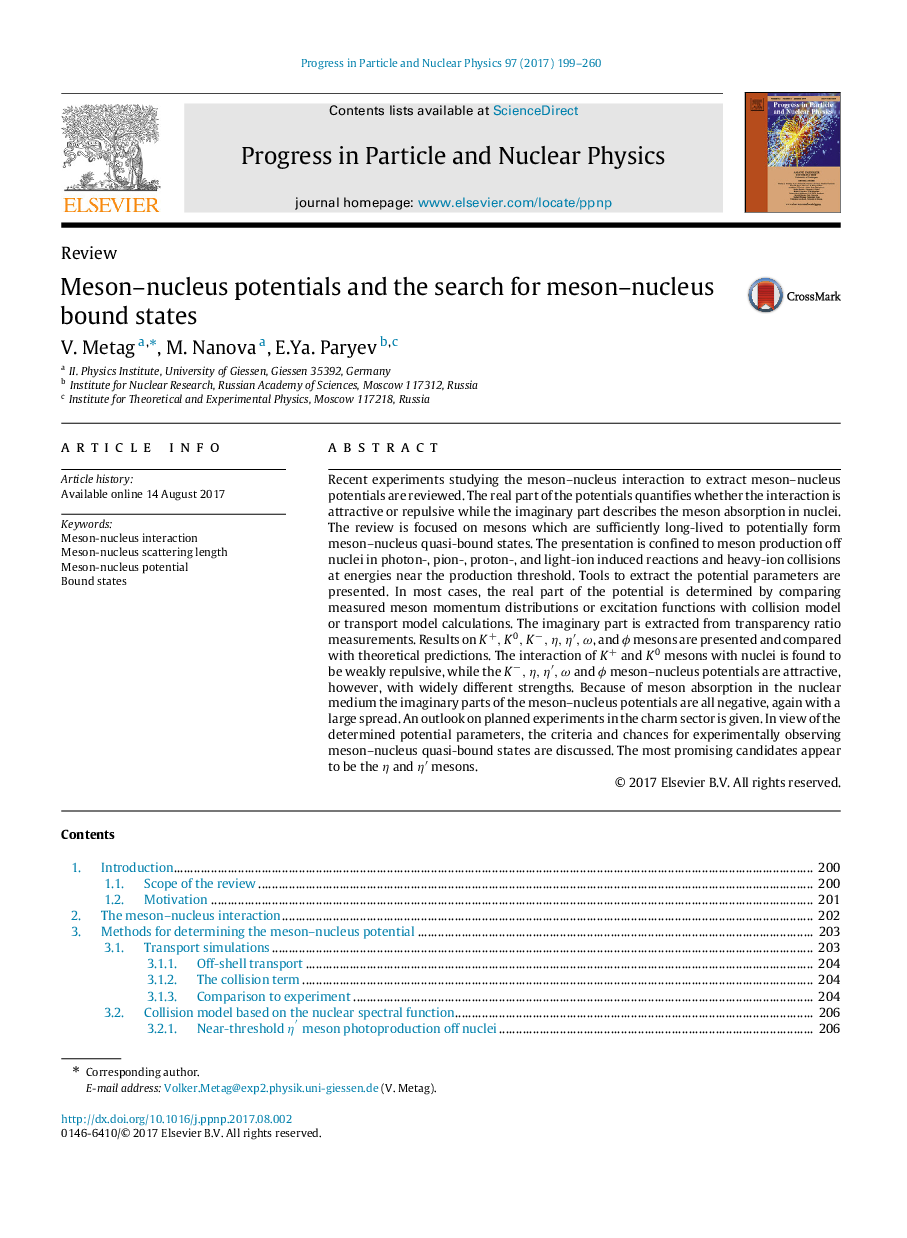| Article ID | Journal | Published Year | Pages | File Type |
|---|---|---|---|---|
| 5495574 | Progress in Particle and Nuclear Physics | 2017 | 62 Pages |
Abstract
Recent experiments studying the meson-nucleus interaction to extract meson-nucleus potentials are reviewed. The real part of the potentials quantifies whether the interaction is attractive or repulsive while the imaginary part describes the meson absorption in nuclei. The review is focused on mesons which are sufficiently long-lived to potentially form meson-nucleus quasi-bound states. The presentation is confined to meson production off nuclei in photon-, pion-, proton-, and light-ion induced reactions and heavy-ion collisions at energies near the production threshold. Tools to extract the potential parameters are presented. In most cases, the real part of the potential is determined by comparing measured meson momentum distributions or excitation functions with collision model or transport model calculations. The imaginary part is extracted from transparency ratio measurements. Results on K+,K0,Kâ,η,ηâ²,Ï, and Ï mesons are presented and compared with theoretical predictions. The interaction of K+ and K0 mesons with nuclei is found to be weakly repulsive, while the Kâ,η,ηâ²,Ï and Ï
meson-nucleus potentials are attractive, however, with widely different strengths. Because of meson absorption in the nuclear medium the imaginary parts of the meson-nucleus potentials are all negative, again with a large spread. An outlook on planned experiments in the charm sector is given. In view of the determined potential parameters, the criteria and chances for experimentally observing meson-nucleus quasi-bound states are discussed. The most promising candidates appear to be the η and ηⲠmesons.
Keywords
Related Topics
Physical Sciences and Engineering
Physics and Astronomy
Nuclear and High Energy Physics
Authors
V. Metag, M. Nanova, E.Ya. Paryev,
